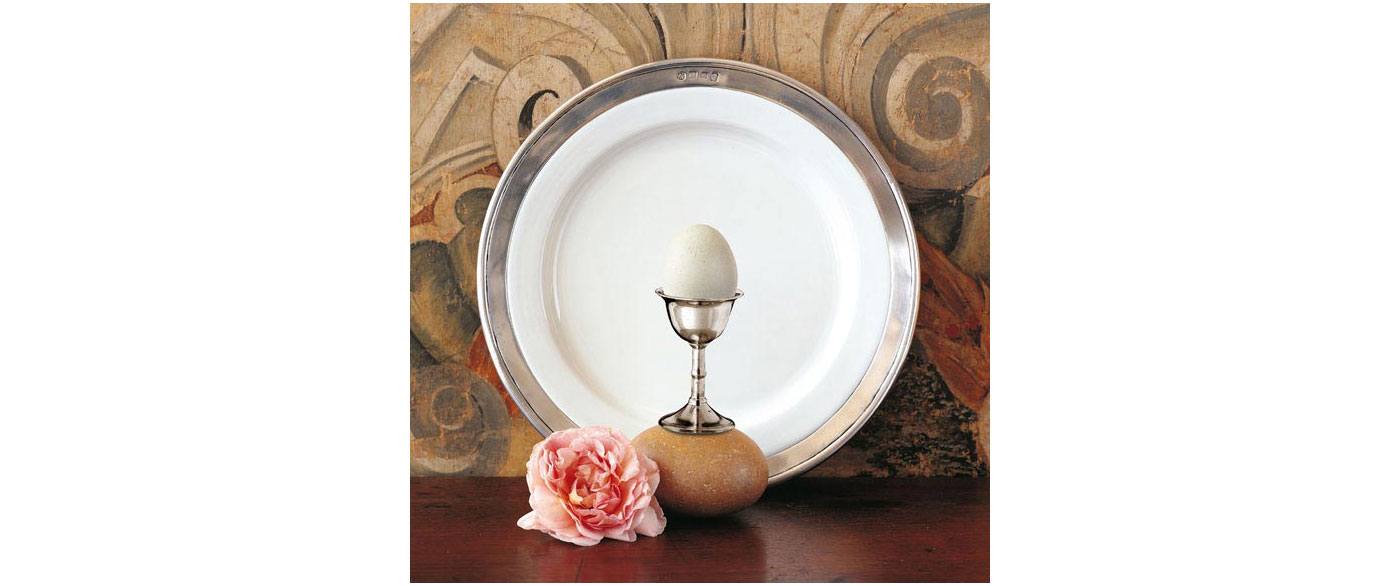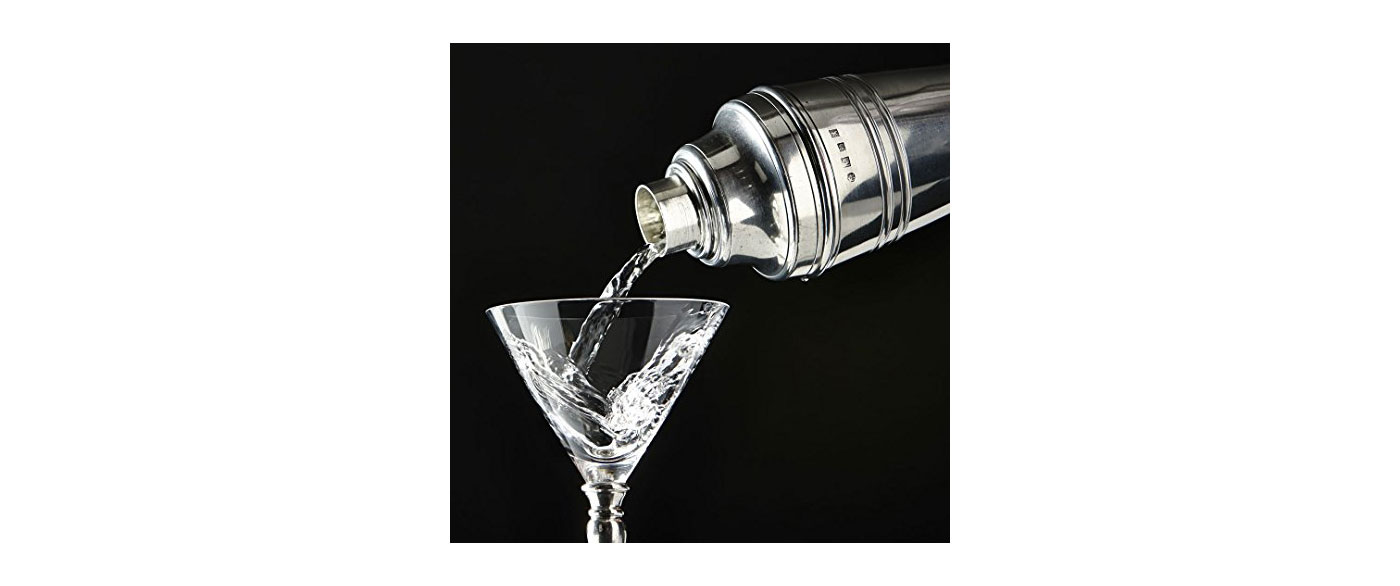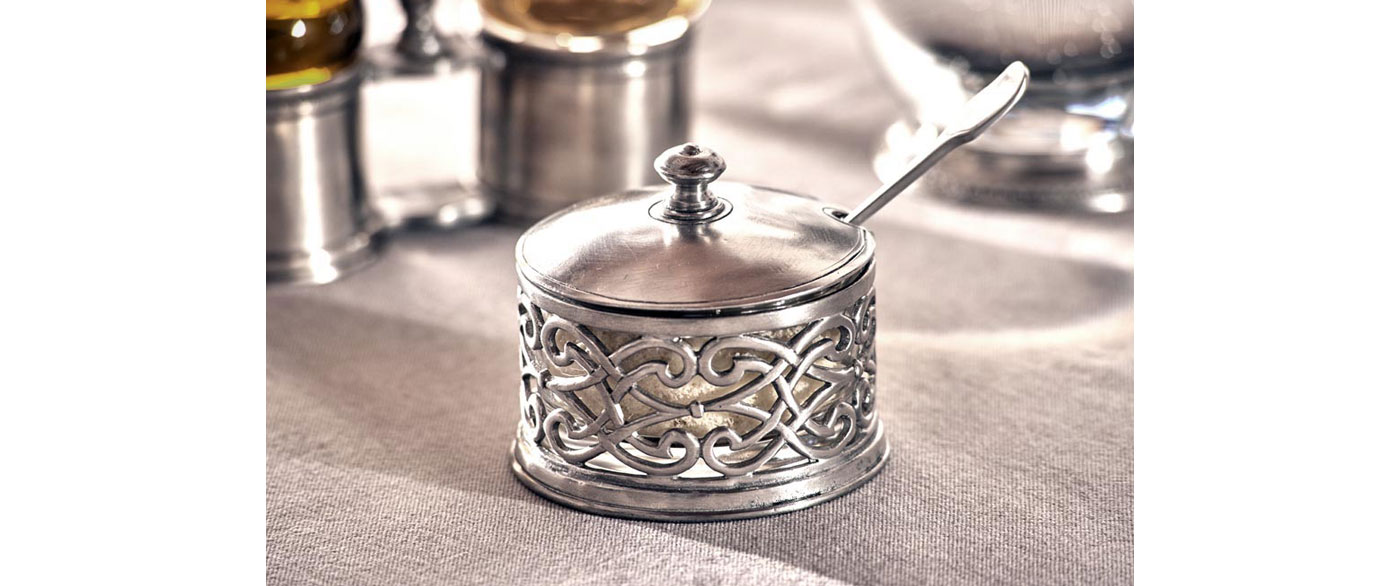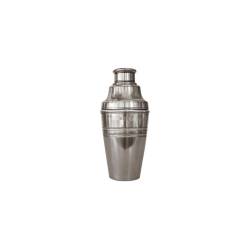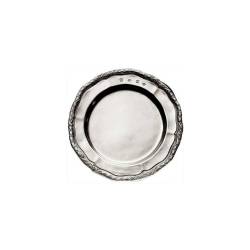Cosi Tabellini
Cosi Tabellini is a family-owned company that, since 1954, has been involved in the craftsmanship of pewter, ceramics and crystal in a workshop in Brescia, a city that has been known for centuries for pewter work. The artisanal production, still carried out today through the casting technique, is carried on by the current owners who, while faithful to the origins, have renewed and modernized the design, combining this alloy with equally important materials.
Pewter objects or objects made of tin? The components of pewter
In contrast to other idioms, there is a linguistic distinction in Italian between pewter and tin, now the fourth most valuable metal after platinum, gold and silver. Pewter has undoubted value: less expensive than silver but just as beautiful and striking, it is thought to have been first used during the Bronze Age (3500-1200 BC). It is an alloy composed mainly of tin, with a small amount of copper and antimony; metallurgy experts have speculated that it may have been invented by reversing the amounts of copper and tin present in bronze, either by accident or by table.
The origins of pewter
Pewter has been used to make objects as useful as they are beautiful, and written references to its use are found in the Bible, Egyptian inscriptions, and Roman texts from the imperial era, just as its trade can be traced back to the time of the Phoenicians and then the Romans. The main European sources of tin were the mines of Brittany, Cornwall and the Iberian Peninsula, while the center of Italian industry, Venice, imported tin until the 15th century, when cheaper sources became available in Cornwall.
Pewter between the Middle Ages and the Renaissance
During the Middle Ages, the production of pewter objects was limited by conflicts, such that this precious material was used mainly for religious iconography and by noble families. In the Renaissance age, with social and technological progress and improved living standards, pewter gradually replaced wood and clay for the production of household items, the quality of pewter workers' work was also regularized in Italy (an example for all Paratici in Brescia); between the sixteenth and seventeenth centuries it then became the main component of liturgical and tableware objects, leading to the creation of real works of art.
From the nineteenth century to the present day
The age of classicism, the nineteenth century, soured the love of pewter, which was gradually replaced by glass, steel, and porcelain; however, a variant of it, Britannia metal, became popular, and the floral style ofArt Nouveau allowed pewter masters to create some masterpieces. A number of craft workshops managed to survive postwar industrialization, and today artisanal pewter is undergoing a renaissance, especially in northern Italy. Free of all traces of lead by law since 1970, many workshops have retained the forms of traditional styles but, since it is a versatile and malleable material, they are able to conceive innovative designs, allowing this ancient material to remain current and contemporary.
Made in Italy: history of pewter
Italy's first connection with pewter can be traced back to the 8th century; the pewter trade began with the Phoenicians, with the port of Venice a major importer, and Italian artisans playing a leading role; their creative and technical skills became popular abroad as well, extending as far as Lombardy and especially Brescia. For Cosi Tabellini it all began in Lombardy, when Bruno Cosi found work in a pewter workshop; the great-uncle of the present owners started his in 1954, joined by his nephew Sergio, father of today's owners. Hence the expansion of the area of influence, from generation to generation to the present, with the goal of preserving the legacy of classic styles while nurturing the company's evolution.
Uses and value of pewter objects
Non-toxic and very stable-it is in fact composed only of copper, tin and antimony-lead-free and safe for food use, Cosi Tabellini's pewter meets all relevant EU and US standards. Its versatility makes it perfect not only for decorative objects, but also for use with food and beverages, so much so that the Lombard company's collections offer something suitable for every occasion and aesthetic taste, from gala services to everyday objects, from crystal to ceramics, to the pure pewter that gives life to goblets and trays. The value of Cosi Tabellini's pewter is therefore unquestionable.
Pewter for Cosi Tabellini
Cosi Tabellini products, of which you will find an assortment for all tastes and budgets on RG Mania, are ideal for upscale hotels and fine restaurants. Distinctive factors include pewter punches stamped on each item to show its origin and guarantee its authenticity and links to the silver screen, as well as Italian TV series. The Brescia-based pewter company thus offers artisanal pewter production that is characterized by understated elegance influenced by its Italian roots, in which the ancient knowledge and techniques of master pewter makers are at the service of designs suspended between classic and contemporary, so that they blend seamlessly into settings that are as modern as they are traditional.

